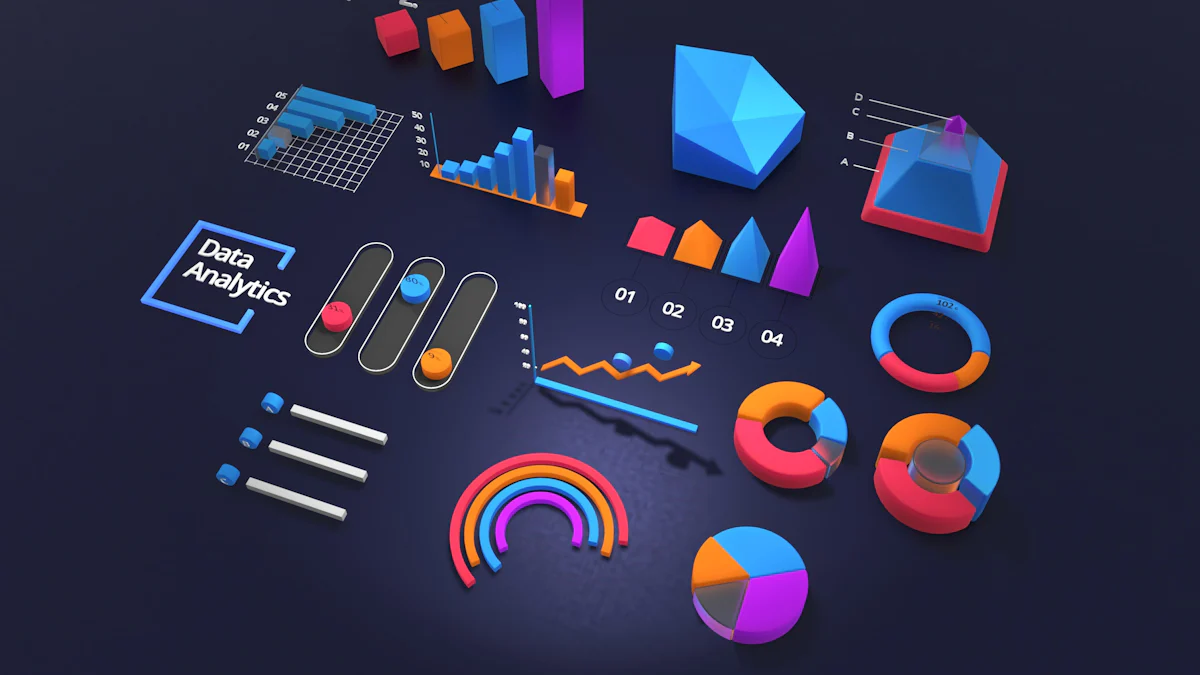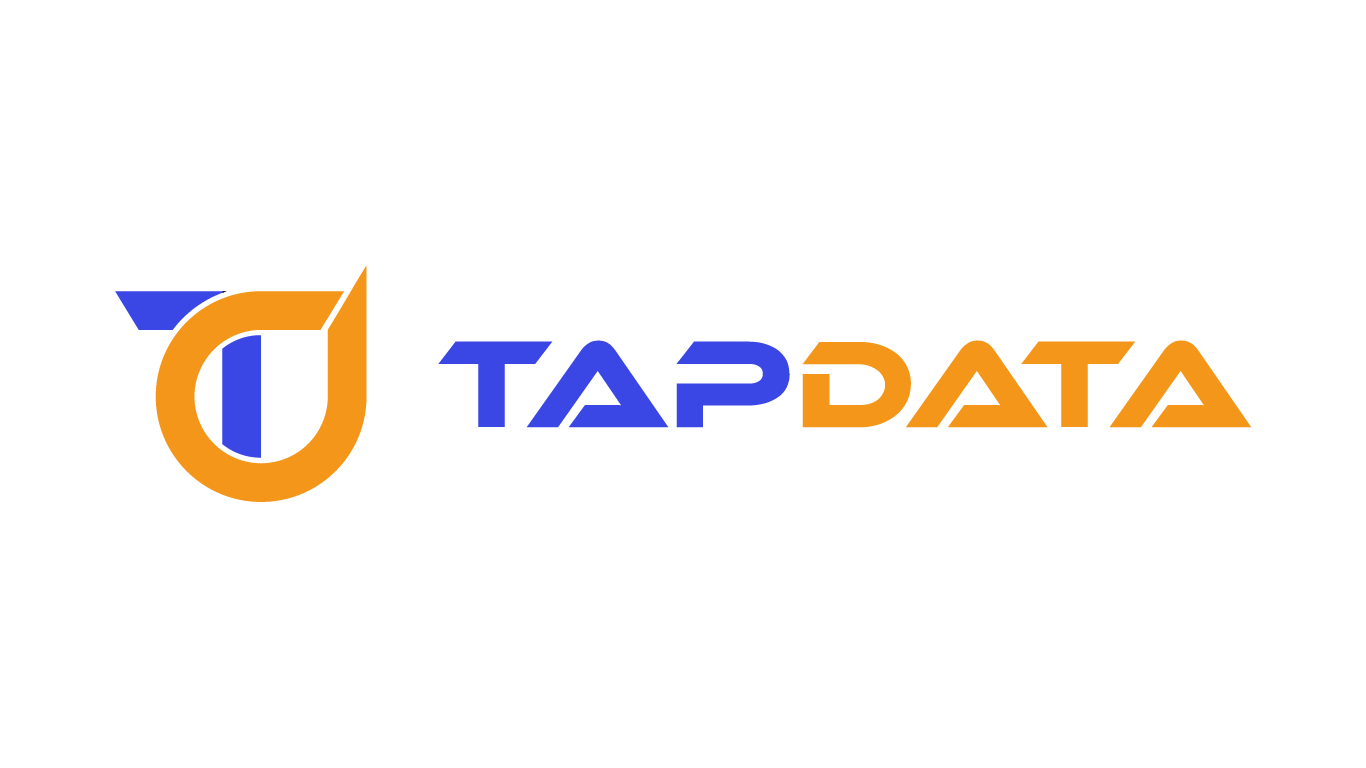The Core Concept of Data as a Service DaaS in 2025

Data-as-a-service transforms how you access and use information. This cloud-based model delivers on-demand data, eliminating the need for complex infrastructure. By 2025, data as a service evolves into a utility, empowering you to make strategic decisions with precision. It integrates data from multiple sources, offering real-time insights and fostering innovation. With DaaS, you gain scalable solutions and self-service tools that reduce IT dependency. This agility enables businesses to adapt quickly to market changes. The DaaS market, projected to grow from $21 billion in 2024 to $75.2 billion by 2032, underscores its rising significance.
Key Takeaways
Data as a Service (DaaS) gives quick access to data.
It helps businesses decide faster and work more efficiently.
DaaS removes the need for hard-to-manage systems.
This lowers costs and grows with business needs easily.
It gives live data, helping companies see trends clearly.
Businesses can use this to plan better and improve ideas.
DaaS works with many data types and fits with old systems.
It is a flexible tool for small and big businesses alike.
By 2025, DaaS will grow a lot and become more important.
It will help industries stay creative and ahead of others.
Understanding Data as a Service (DaaS)

How DaaS Works
Cloud-based infrastructure and APIs
DaaS operates on a cloud foundation, making data accessible from anywhere. You interact with this data through APIs, which act as bridges between your applications and the data stored in the cloud. This setup eliminates the need for on-premises infrastructure, reducing costs and complexity. Cloud computing ensures scalability, allowing you to handle growing data demands effortlessly.
The core principles of DaaS include:
Data Management Layer: Ensures data is processed and routed efficiently.
Data Security: Protects sensitive information with encryption and access controls.
Data Governance: Maintains data quality, availability, and compliance with regulations.
Key components: data sources, platforms, and delivery mechanisms
DaaS integrates multiple data sources, such as databases, IoT devices, and third-party providers. Platforms process and organize this data, while delivery mechanisms ensure you receive it in real-time or as needed. These components work together to provide seamless access to structured and unstructured data.
Types of Data in DaaS
Structured, unstructured, and semi-structured data
DaaS handles all types of data. Structured data, like spreadsheets, is highly organized. Unstructured data, such as videos or social media posts, lacks a predefined format. Semi-structured data, like JSON files, falls between these two categories. This versatility allows you to analyze diverse datasets for better insights.
Real-time and historical data
DaaS supports both real-time and historical data applications. For example:
Banks monitor market fluctuations and adjust portfolios instantly.
Healthcare providers predict outcomes using historical patient data.
Retailers analyze past customer behavior to create personalized promotions.
Industry | Application Description |
|---|---|
Retail | GlobalMart uses DaaS to track consumer purchasing trends and manage inventory, adjusting strategies based on real-time data. |
Finance | Banks utilize DaaS for real-time access to financial data, enabling informed decision-making and risk management. |
Healthcare | DaaS integrates EHRs and provides real-time analytics to enhance patient care and operational efficiency. |
Manufacturing | DaaS offers real-time analytics through IoT data, improving operational efficiency and predictive maintenance. |
Applications Across Industries
Use cases in healthcare, finance, and retail
DaaS transforms industries by enabling smarter decisions. In healthcare, it integrates electronic health records (EHRs) for real-time analytics, improving patient care. Retailers use DaaS to analyze customer data, delivering personalized experiences. Financial institutions rely on DaaS for real-time access to market data, optimizing risk management.
Industry | Use Case |
|---|---|
Retail | GlobalMart uses DaaS to track consumer purchasing trends and manage inventory efficiently. |
Finance | WealthEdge Financial accesses real-time global financial market data to adapt investment strategies. |
Healthcare | CityCare Hospitals leverages DaaS for real-time access to patient medical histories, improving care. |
Emerging sectors adopting DaaS
New sectors are embracing DaaS for its benefits. The public sector values its cost-effectiveness and scalability. Small and medium enterprises (SMEs) use DaaS to access enterprise-grade analytics without heavy investments. Telecommunications combine DaaS with edge computing for low-latency data processing.
Sector | Reasons for Adoption |
|---|---|
Public Sector | Cost-effectiveness, scalability, operational efficiency, enhanced data management capabilities. |
Small and Medium Enterprises | Improved data management, enhanced analytics capabilities, reduced IT infrastructure costs. |
Banking, Financial Services, and Insurance | Demand for real-time data analytics, access to diverse data sources for insights. |
Telecommunications | Combination with edge computing for low latency and real-time data processing. |
Benefits of Data as a Service
Flexibility and Scalability
On-demand data access for dynamic needs
DaaS offers unmatched flexibility, allowing you to adapt to changing business needs effortlessly. Unlike traditional data models, which often struggle with adaptability, DaaS enables you to adjust your data usage as your requirements evolve. Whether your business faces fluctuating demands or seasonal spikes, you can scale your data needs up or down without overhauling your infrastructure. This flexibility ensures that you remain agile in a fast-paced market.
DaaS also allows you to start small with a proof of concept and expand quickly as your needs grow. Its cloud-based nature ensures that capacity adjustments happen almost instantly. This scalability is essential for businesses that experience rapid growth or unpredictable data requirements.
Seamless integration with existing systems
DaaS integrates smoothly with your current tools and platforms, ensuring you can use your data effectively. For example:
It connects with CRM systems, analytics platforms, and cloud storage for streamlined operations.
APIs and other protocols synchronize data across your systems, ensuring compatibility and efficiency.
This seamless integration reduces disruptions and enhances your ability to leverage data for decision-making.
Cost Efficiency
Reduced infrastructure costs
DaaS eliminates the need for expensive on-premises infrastructure. You no longer need to invest in data centers or servers, as the service provider manages all hardware and software. This shift reduces costs related to data storage, processing, and management. It also allows you to focus on your core business activities instead of worrying about infrastructure maintenance.
Pay-as-you-go pricing models
With DaaS, you only pay for the data you use. This pricing model lowers upfront costs, making it easier for you to adopt the service. It also provides insights into your usage patterns, helping you optimize your data strategy. As your data needs grow, your costs scale accordingly, ensuring fairness and efficiency.
Global Accessibility
Cross-border data access and collaboration
DaaS enables you to access data from anywhere in the world. This global accessibility fosters collaboration among teams in different locations. You can share data seamlessly across borders, ensuring everyone has the information they need to make informed decisions.
Supporting remote and hybrid work environments
DaaS supports remote and hybrid work by providing secure and reliable cloud-based data access. Employees can access company data from any location and collaborate with their teams in real time. This flexibility enhances productivity and ensures that your business remains operational, regardless of where your employees are located. Built-in security protocols also protect sensitive data, ensuring the safety of your information.
Enhanced Business Intelligence
Integration with AI and analytics tools
Integrating DaaS with AI and analytics tools transforms how you approach business intelligence. These platforms use AI and machine learning to process vast amounts of data instantly. This capability allows you to uncover hidden patterns and trends that might otherwise go unnoticed. For example, predictive analytics helps you anticipate market shifts, enabling you to stay ahead of competitors.
AI-powered DaaS platforms also streamline operations by delivering actionable insights. You can make precise, data-driven decisions that align with your strategic goals. This integration empowers you to innovate and achieve sustainable growth. By leveraging these tools, you gain the ability to adapt quickly to changing market conditions.
Machine learning enhances DaaS by providing analytic overlays that highlight trends and predictions. These tools enable you to identify opportunities and mitigate risks effectively. The ability to harness predictive insights is essential for maintaining a competitive edge in today’s fast-paced business environment.
Faster, data-driven decision-making
DaaS accelerates decision-making by providing real-time access to critical data. In financial services, banks use DaaS to monitor market fluctuations and adjust investment portfolios instantly. This capability ensures you can respond to market changes without delay.
In healthcare, DaaS integrates electronic health records to deliver real-time analytics. This integration improves patient care and operational efficiency. For example, hospitals can analyze patient data to predict outcomes and optimize treatment plans.
Retailers also benefit from faster decision-making. By analyzing customer data in real-time, you can tailor promotions to match buying patterns. This approach enhances customer satisfaction and boosts sales. Companies like GlobalMart use DaaS to track purchasing trends and manage inventory efficiently. These examples highlight how DaaS enables you to make informed decisions quickly, driving better outcomes across industries.
Challenges of Data as a Service
Security and Privacy Concerns
Risks of data breaches and cyber threats
Data-as-a-Service introduces significant risks to data security. Sensitive data stored in the cloud can become a target for cyberattacks if the service provider lacks robust security measures. Hackers may exploit vulnerabilities, leading to data breaches that compromise mission-critical applications. You must ensure that your DaaS vendor implements encryption, access controls, and regular security audits to protect your data. Without these safeguards, your organization could face severe financial and reputational damage.
Compliance with global data protection laws
Operating in a global environment requires compliance with diverse data protection laws. Regulations like GDPR and CCPA impose strict rules on how you handle and store sensitive data. Non-compliance can result in hefty fines and legal challenges. Managing compliance becomes even more complex when your data spans multiple jurisdictions. You need a DaaS provider that prioritizes data governance and ensures adherence to these regulations.
Data Governance Issues
Ensuring data quality and consistency
Maintaining data quality is a persistent challenge in DaaS platforms. Unreliable or inconsistent data can disrupt your strategic planning and decision-making processes. Common issues include:
Duplicate records
Contradictory values
Ambiguous meanings
Conflicting definitions
These problems can lead to inaccurate insights, affecting your business outcomes. Implementing strong data management practices helps you address these challenges effectively.
Managing large-scale data ecosystems
Handling vast amounts of data from multiple sources can overwhelm your systems. Large-scale data ecosystems often suffer from integration issues, making it difficult to maintain consistency. You must invest in tools and strategies that streamline data processing and ensure seamless integration across platforms.
Adoption Barriers
Resistance to change in traditional industries
Traditional industries often struggle to adopt DaaS due to their reliance on legacy systems. These outdated technologies lack the agility needed for modern data solutions. Data locked in silos further restricts collaboration and innovation. Transitioning to DaaS requires a cultural shift and a willingness to embrace new technologies.
High initial setup and integration costs
The upfront costs of implementing DaaS can deter adoption. Setting up the necessary infrastructure and integrating it with existing systems demands significant investment. However, the long-term benefits, such as flexibility and security, often outweigh these initial expenses. By adopting DaaS, you gain access to scalable solutions that support your growth.
Barrier | Description |
|---|---|
Lack of Agility | Legacy systems are often built on outdated technologies, making updates complex and costly. DaaS offers agility. |
Data Locked in Silos | Isolated data storage in legacy systems restricts collaboration. DaaS enables seamless data integration. |
Poor Data Accessibility | On-premises servers limit real-time data access. DaaS provides cloud-based, always-available access. |
Limited Scaling Capabilities | Traditional databases struggle with scaling. DaaS offers scalable solutions that grow with business needs. |
Limited Data Support | Legacy systems often lack support for unstructured data. DaaS supports diverse data types, offering flexibility. |
The Future of DaaS in 2025

Key Trends in Data-as-a-Service
Integration with AI and machine learning
AI and machine learning are transforming how you use data-as-a-service. These technologies enhance the analytical capabilities of DaaS platforms, enabling you to uncover predictive insights. For example, AI-powered tools can help you anticipate market trends, allowing you to make proactive decisions. Machine learning algorithms optimize decision-making by identifying patterns in large datasets. This integration is particularly valuable in industries like healthcare and finance, where accurate predictions drive better outcomes.
DaaS solutions are also moving closer to the edge, processing data near its source. This trend improves real-time decision-making, which is essential for applications like autonomous vehicles and smart cities. By combining AI, machine learning, and edge computing, DaaS empowers you to act on insights faster than ever before.
Growth of real-time data streaming
Real-time data streaming is becoming a cornerstone of DaaS. This capability allows you to access and analyze data as it is generated. For instance, retailers can monitor customer behavior in real-time to adjust inventory or marketing strategies. Banks use real-time financial data to manage risks and optimize portfolios. This trend ensures that you stay agile in a rapidly changing market.
The democratization of data access is another key development. DaaS platforms are making data more accessible to businesses of all sizes. This shift enables you to leverage enterprise-grade analytics without significant investments, leveling the playing field for smaller organizations.
Market Growth and Adoption
Increasing demand for data-driven strategies
The demand for data-driven strategies is fueling the growth of the DaaS market. Companies that use data to guide decisions are more productive and profitable than their competitors. Nearly half of Fortune 1,000 executives report significant value from using data to cut costs. These benefits highlight why businesses like yours are prioritizing data-as-a-service.
Expansion of DaaS providers and platforms
The DaaS market is experiencing rapid expansion. It is projected to grow from $21 billion in 2024 to $75.2 billion by 2032, with a compound annual growth rate of 17.23%. This growth reflects the increasing adoption of cloud computing and the rising need for scalable data solutions. As more providers enter the market, you gain access to diverse platforms tailored to your specific needs.
Role in Business Intelligence and Analytics
Driving innovation and competitive advantage
DaaS is revolutionizing how you leverage data for innovation. By transforming raw data into actionable insights, it helps you make informed decisions. Real-time analytics allow you to respond quickly to market changes, giving you a competitive edge. DaaS also supports sharper customer targeting and data-driven product development, enabling you to differentiate your business.
Supporting predictive and prescriptive analytics
Predictive and prescriptive analytics are key strengths of DaaS. Predictive tools forecast future outcomes, helping you anticipate market demands. For example, retailers use predictive analytics to adjust inventory based on consumer preferences. Prescriptive analytics goes a step further by recommending actions based on these predictions. Banks rely on prescriptive tools to optimize investment portfolios, ensuring better financial outcomes. These capabilities make DaaS an indispensable tool for modern businesses.
DaaS redefines how you access and use data by delivering it on demand through a cloud-based model. Its benefits include unmatched flexibility, cost savings, and faster decision-making. You can leverage real-time data access to analyze trends, forecast outcomes, and optimize strategies. Predictive and prescriptive analytics empower you to act with confidence and precision. By 2025, DaaS will play a pivotal role in driving innovation and operational efficiency. Businesses adopting multi-cloud strategies and focusing on data quality will unlock its full potential, gaining a competitive edge in a data-driven world.
Unlock the Power of Data as a Service with TapData
Ready to enhance your data accessibility and collaboration across borders? TapData's Data as a Service solution empowers businesses with real-time data synchronization, seamless integration, and robust security features to support your global operations.
FAQ
What is Data as a Service (DaaS)?
DaaS is a cloud-based model that delivers data on demand. It eliminates the need for physical infrastructure, providing you with real-time access to structured and unstructured data. This service helps you make informed decisions and adapt quickly to changing business needs.
How does DaaS improve business agility?
DaaS enables you to access data instantly, scale resources as needed, and integrate seamlessly with existing systems. This flexibility allows you to respond to market changes, optimize operations, and innovate faster.
Is DaaS secure for sensitive data?
Yes, DaaS providers implement encryption, access controls, and regular security audits to protect your data. However, you must choose a provider that complies with global data protection laws like GDPR or CCPA to ensure maximum security.
Can small businesses benefit from DaaS?
Absolutely! DaaS offers small businesses access to enterprise-grade analytics without heavy investments. Its pay-as-you-go pricing and scalability make it an affordable solution for improving decision-making and gaining competitive insights.
What industries use DaaS the most?
Healthcare, finance, and retail are leading adopters of DaaS. Emerging sectors like telecommunications and public services are also leveraging its benefits for real-time analytics, cost efficiency, and operational improvements.
See Also
Best Data Integration Tools of 2024 for Efficient Processes
Premier Cloud ETL Solutions for Seamless Data Integration
Exploring Data Integration Strategies to Boost Business Success
The Impact of Real-Time Data Integration on AI Choices
The Role of Near-Real-Time Data Replication in Enhancing Customer Journeys

